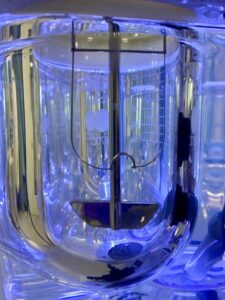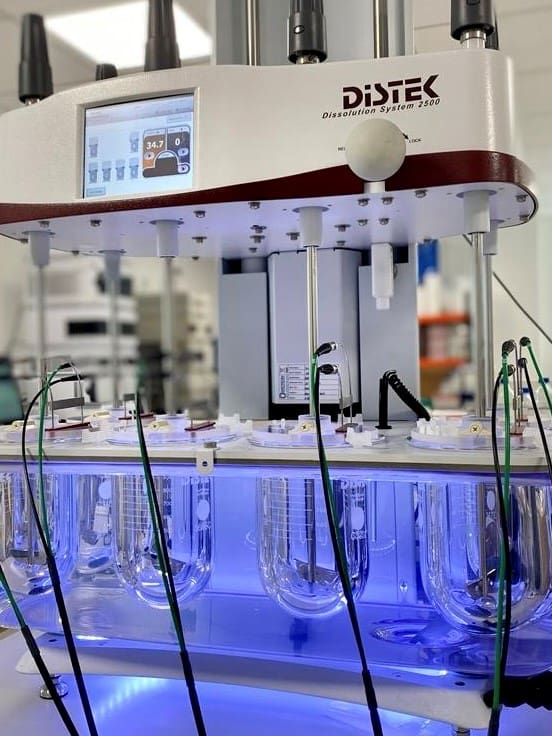Dissolution testing: Real-world evaluation of UV arch probes
Dissolution testing, including biorelevant dissolution and development of clinically relevant dissolution tests, is becoming an increasingly important foundation for new product development. In support of our aim to provide high quality yet agile support to our clients, efficiency is key, and we strive for continuous improvements in this area.
We recently had the opportunity to evaluate Omicron’s Distek Opt-Diss 410, an in situ fibre optic system which utilises their patented Arch Probe design. The product application notes clearly exemplify the benefits of the system in model experiments, but we wanted to stress test its applicability in real-world examples using biorelevant media and with complex excipient mixtures commonly used for enhancement of dissolution performance of poorly soluble APIs.
SEDA Scientist Sin-Nee Teoh performed a raft of experiments, the results of which were recently presented at Virtual APS PharmSci 2021 in poster format which can be viewed here and is summarised by Sin-Nee below.
 “This poster reports our work to evaluate the In-situ UV arch probe to analyse samples during dissolution testing.
“This poster reports our work to evaluate the In-situ UV arch probe to analyse samples during dissolution testing.
Traditionally, dissolution sample analysis is through manual sampling, filtration, then offline LC-UV analysis. Method establishment for separating the API from complex mixtures to allow quantification has to be conducted before the commencement of dissolution testing, as does filter compatibility testing. This process can be time-consuming, affecting the turnaround of data. In addition, the need for manual sampling reduces achievable sample frequency and restricts it to daytime laboratory hours – not ideal for extended release formulations.
We tested the Distek Opt-Diss 410 using caffeine as a model compound, in complex biorelevant media, in the presence of commonly used solubilising excipients (e.g. TPGS, PEG and Gelucire 44/14), with water-insoluble fillers (e.g. microcrystalline cellulose) and in pH shift dissolution studies.
The probes performed well in biorelevant media such as FaSSIF, but were unsuitable for use in opaque media e.g. FeSSGF (1:1 ratio of buffer with whole milk). Multi component analysis (MCA) and/or use of a shorter pathlength was successfully used to circumvent issues with overlapping absorbance spectra in certain media (Triton) and with TPGS. The probes also worked well in tests with insoluble excipients, since the unique arch design means that particles are less likely to sediment on the probe as is common with UV dip probes.
We have demonstrated suitability of in situ UV fibre optic arch probes for early formulation screening applications including those with insoluble excipients, and generated data of appropriate quality in a less labour intensive manner compared with offline LC-UV analysis. In addition, where more complex media or interfering excipients are used, there are innovative ways of using MCA with careful experimental design to circumvent these issues without the need for chromatographic separation with the exception of opaque media for which UV arch probe is not suitable. However, due to the preparation of multiple standards and data processing required for MCA, the time/labour efficiencies are less pronounced in early development/screening applications but may be of value in a more routine analysis/QC environment”
We have expanded our laboratory services offering and doubled the team over the last two years, with further investments planned in the coming months, all aimed at adding value to our Clients. Watch this space!
